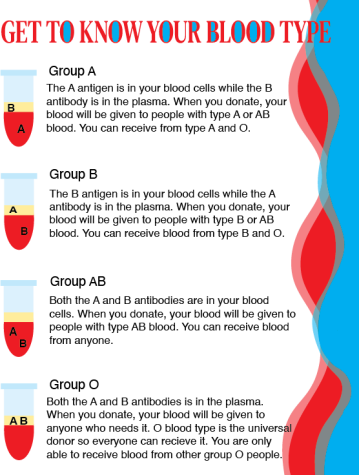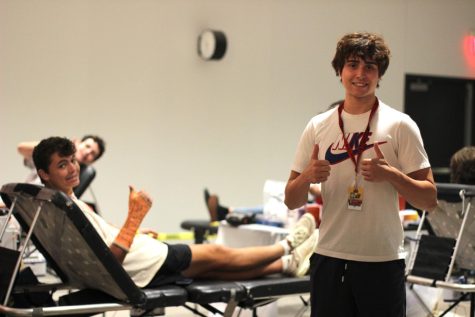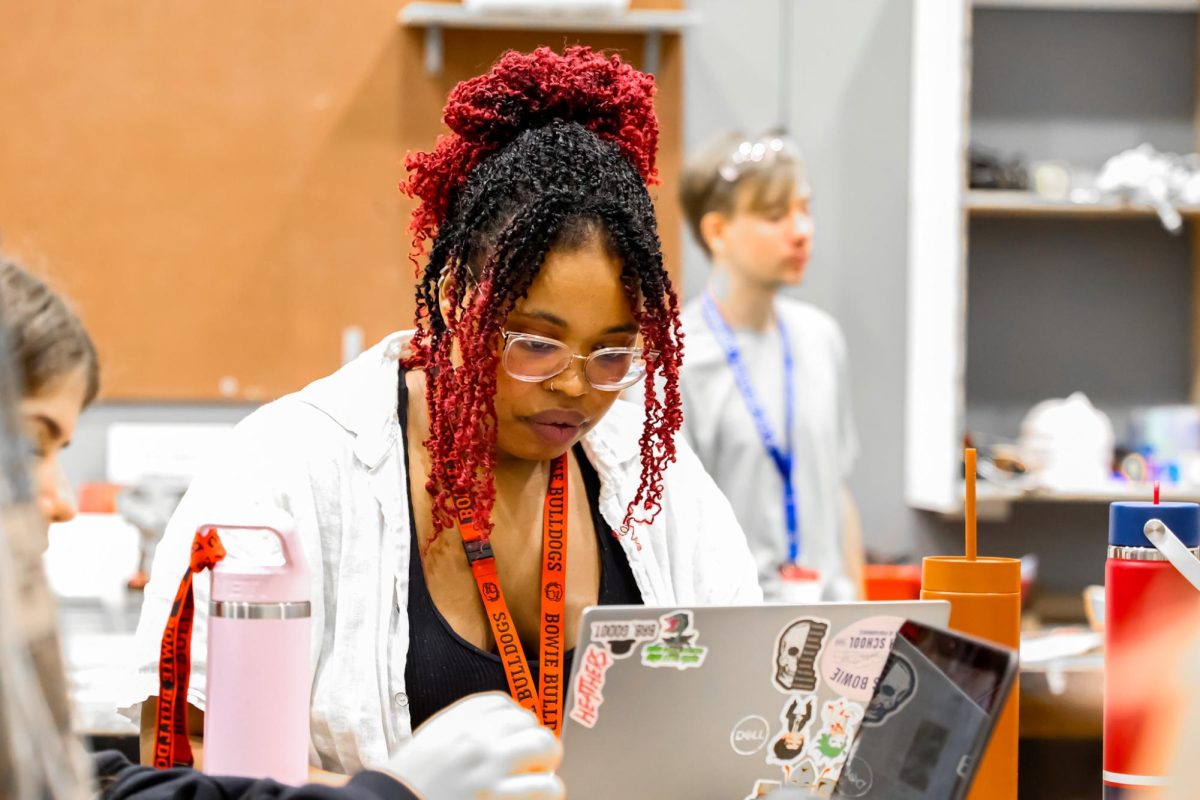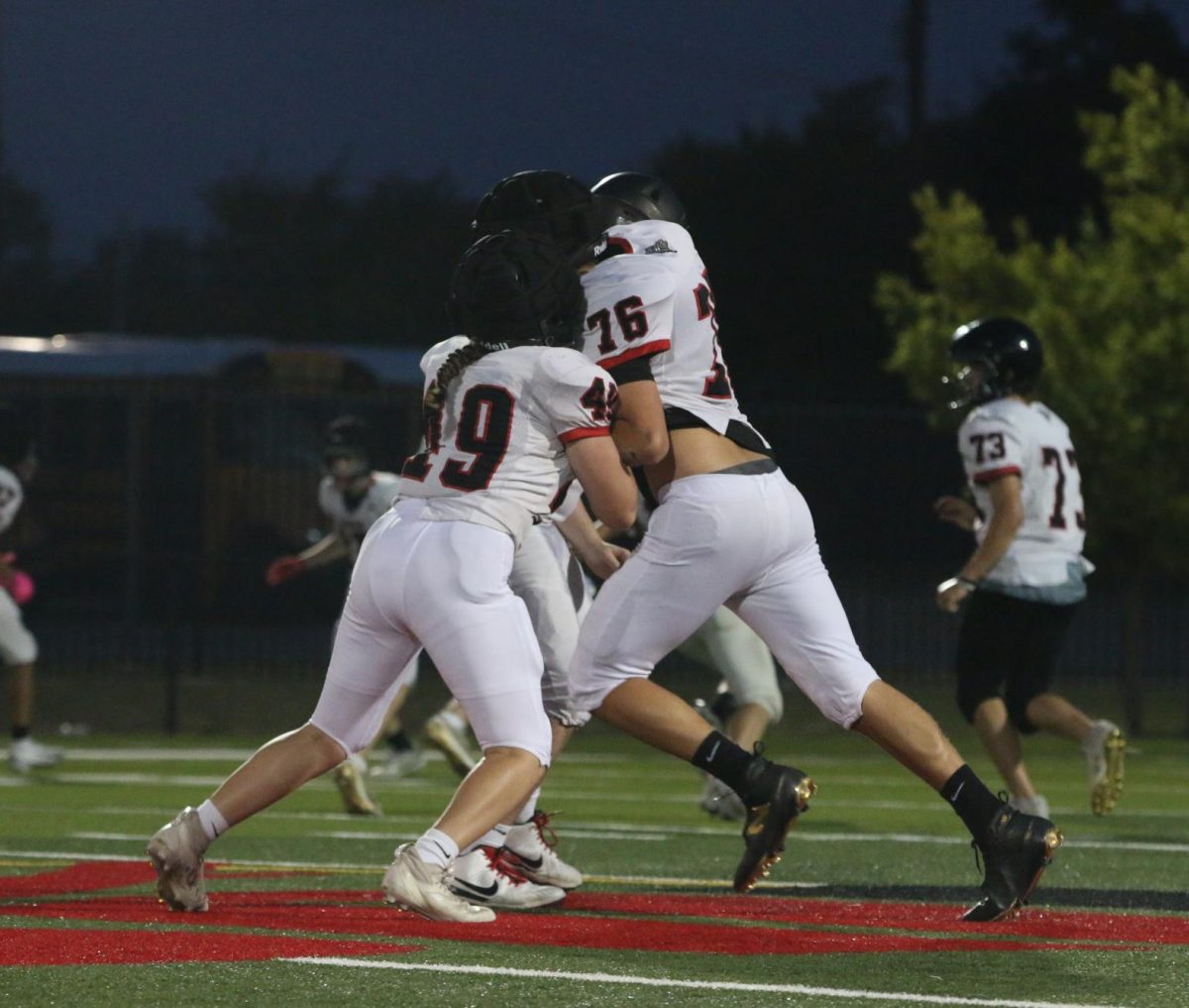Saving lives with a blood drive
DONATING BLOOD: Junior Brant Kinzy waits as his blood is drawn during the drive. “[I was] little bit nervous,” Kinzy said. “But I think overall, I was excited more than I was nervous.”
October 26, 2022
In January 2022, The American Red Cross declared its first-ever Blood Crisis. As a result of the COVID-19 pandemic, the Red Cross experienced a decline in the number of blood donors and had to limit blood distributions to hospitals.
In response to the ongoing blood crisis, Senior Jake Wilson worked with Student Leadership members to organize the drive on Oct. 25.
“I have worked in the past with the American Red Cross to run a blood drive,” Wilson said. “I thought I could make a big impact on the blood shortage by getting student leadership involved to run a blood drive together.”
The drive took place in the new fine arts building, and 40 students showed up to donate their blood. Out of the 40 who showed up, 29 were able to donate and 4.2 total gallons of blood were donated. Junior Brant Kinzy donated blood for the first time and felt nervous yet excited to help the community.

“It’s just always something I’ve really wanted to do,” Kinzy said. “It helps people. There’s no reason really not to.”
During a whole blood donation, a pint of blood is drawn by a phlebotomist, a medical professional who is trained to perform blood draws. The blood drawn contains platelets, plasma, and red and white blood cells. This is the most common method, and after donation the blood components are separated so that recipients can be given what they need.
When you donate blood it can save someone’s life whether it’s a trauma patient in emergency care and they need the blood right then, or someone who needs blood transfusions to keep going with their day-to-day lives,” Phlebotomist Desiree Johnson said. “Once we’re done collecting the blood here, they get sent to the labs so that way they can test the tubes to make sure that there’s nothing that’s transmittable that will harm somebody.
In order to donate whole blood, donors must be at least 16 years of age and weigh at least 110 lbs. Donors must be in good general health and have healthy iron levels. These requirements ensure the safety of both patients and donors.
I know there’s a blood shortage right now because not enough people are donating blood,” Kinzy said. “I think it’s just kind of a moral question of if you are able to, then why wouldn’t you save lives?”

According to the American Red Cross, someone in the United States needs blood and/or platelets every two seconds, and one blood donation can help save more than one life.
“If someone gets injured and loses blood, they need blood from a donor to survive,” Wilson said. “We’re in a blood shortage right now and every donation helps.”


![DONATING BLOOD: Junior Brant Kinzy waits as his blood is drawn during the drive. "[I was] little bit nervous," Kinzy said. "But I think overall, I was excited more than I was nervous."](https://thedispatchonline.net/wp-content/uploads/2022/10/IMG_9421-900x600.jpg)






